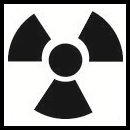
Any item or agent (biological, chemical, physical) which has the potential to cause harm to humans, animals, or the environment, either by itself or through interaction with other factors. The quantity of hazardous materials will determine the difference between a small spill/leak and a large release. An example of a small spill/leak is a broken beaker in a lab setting. An example of a large release is a ruptured tanker truck.
Be familiar with the materials you are working with, observe appropriate safety precautions, and consult with Environmental Health & Safety if you have any questions.
Material Safety Data Sheet (MSDS) information is available to all University personnel by calling 888-362-7416 or visiting www.miami.edu/ehs.
Action Guidelines
Small Hazardous Materials Spill/Leak
- Evacuate the area and find a safe location.
- Do not walk in or touch any of the spilled substance.
- If possible, hold your breath or cover your mouth with a cloth while quickly leaving the area. Try not to inhale gases, fumes, or smoke.
- Stay away from accident victims until the hazardous material has been identified.
- Try to stay upwind of the accident.
- Call campus emergency phone number or call Environmental Health and Safety.
- Keep others away.
- Remain in a safe location to direct emergency personnel to the affected area.
- If you think you may have been exposed to a hazardous material, inform emergency responders immediately.
- Assist with obtaining information regarding the hazardous material.
Large Hazardous Materials Release:
- Stay informed and follow directions from University officials and emergency responders.
- If told to evacuate, do so immediately. While evacuating, avoid inhaling the hazardous material by covering your mouth with a cloth or shirt.
- If told to shelter-in-place, do so immediately.
- Take refuge in a small interior room with few, if any, windows or other connections to the outside environment.
- Close windows and doors.
- Seal gaps under doorways and around windows with wet towels, duct tape, and plastic sheeting or other impervious materials.
- Turn off ventilation system, if possible.
Assisting Victim Exposed to Hazardous Materials:
- Call 911.
- Follow directions from dispatcher on how to best assist the victim.
- The type of hazardous material will dictate whether it is best to:
- Evacuate the area.
- Move victim to fresh air.
- Take the victim to an eyewash station or safety shower.
- Remove the victim’s contaminated clothing.
Strange Odor:
Toxic fumes can infiltrate into or through a building from various sources. Improperly stored chemicals, faulty refrigeration, equipment malfunctions, and engines operated near outside air intakes, are some of the more common sources. If the presence of toxic fumes is suspected:
- Evacuate the area.
- Call your campus emergency phone number.




